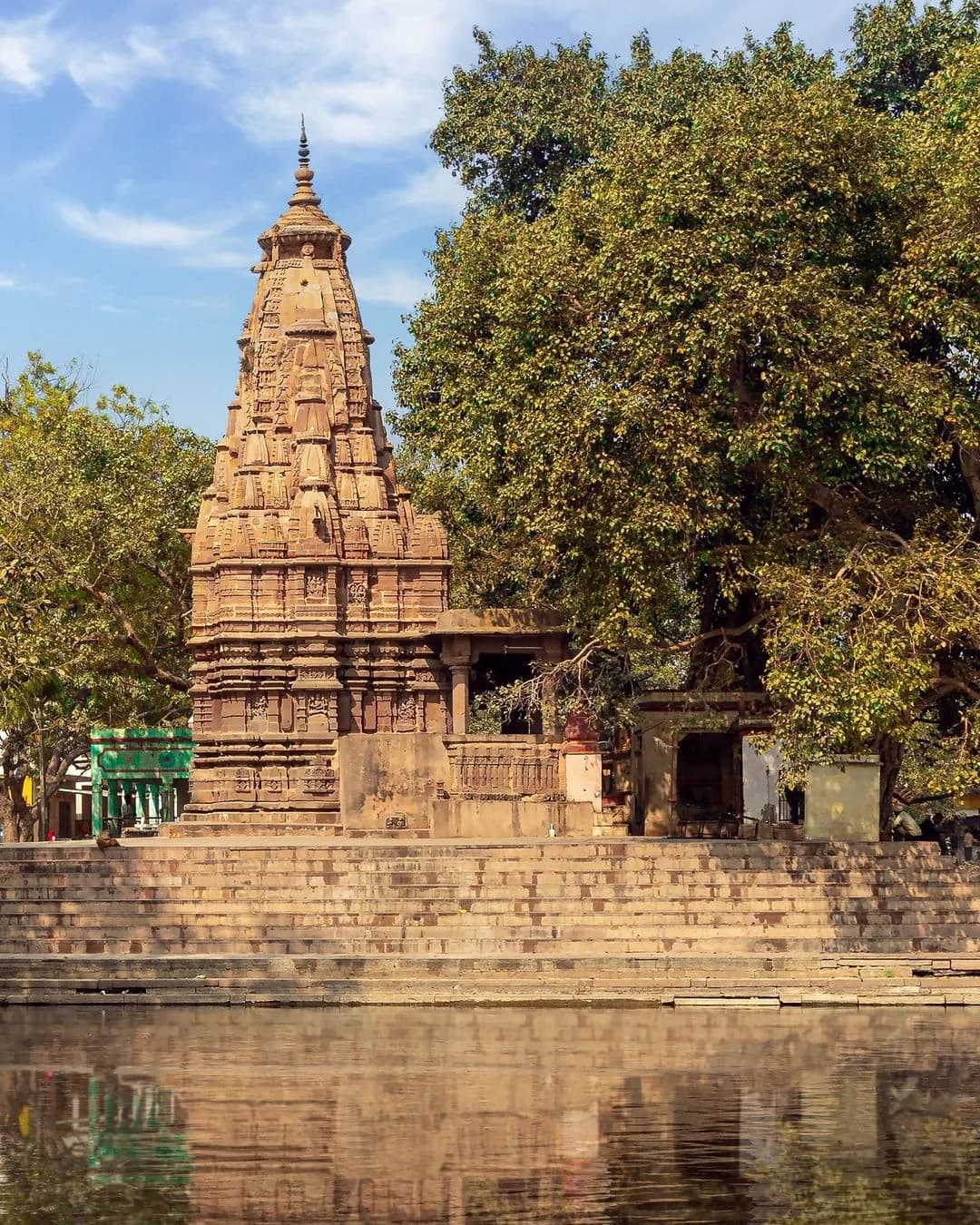Inheritage Foundation
Preserving Our Past, Enriching Our Future
Documenting and digitizing India's architectural heritage
Preserving Our Past, Enriching Our Future
Documenting and digitizing India's architectural heritage
Explore and discover India's rich architectural heritage

Located near Bijnor on the banks of the Ganges, Vidur Kuti is believed to be the place where Mahatma Vidur, the wise half-brother of Dhritarashtra and Pandu from the Mahabharata, spent significant time, especially after leaving Hastinapur. It houses the Vidur Seva Ashram and a temple, serving as a place of pilgrimage and reflection associated with Vidur's wisdom (Vidur Niti).
.jpg&w=3840&q=75)
Kusum Sarovar is a historic sandstone monument with a large water tank situated at the sacred Govardhan Hill. Built during the 18th century, this magnificent structure features elaborate cenotaphs (chhatris) of the royal family of Bharatpur and showcases exceptional Rajasthani architecture. The site is surrounded by lush gardens and offers a serene atmosphere for visitors and pilgrims, making it a significant landmark in the Krishna pilgrimage circuit.

The Mahadev Temple in Varanasi, one of the oldest continuously inhabited cities in the world, is renowned for its religious and architectural significance. Dedicated to Lord Shiva, it showcases classical Nagara-style architecture characterized by ornate stone carvings, elaborate shikharas, and sanctified spaces that have hosted worship for centuries.

The Kashi Vishwanath Temple is one of the most famous Hindu temples dedicated to Lord Shiva. It is located in Vishwanath Gali of Varanasi, Uttar Pradesh, India. The temple stands on the western bank of the holy river Ganga, and is one of the twelve Jyotirlingas, the holiest of Shiva temples. The main deity is known by the name Vishwanatha or Vishweshwara meaning Ruler of the Universe. The newly renovated complex now spans over 5 lakh square feet with 24 buildings.

The Ram Mandir is a grand Hindu temple dedicated to Lord Ram in Ayodhya, Uttar Pradesh. Built on the site believed to be the birthplace of Rama, the temple represents one of the most significant modern religious architectural projects in India. The Nagara-style temple features intricate carvings, a soaring spire (shikhara), and is constructed entirely of pink sandstone without the use of steel. The complex spans 2.7 acres within a larger 70-acre complex and is designed to last over 1,000 years.
.jpg&w=3840&q=75)
Jarai Ka Math is a remarkable 9th-century temple complex displaying exquisite Chandela architecture before their grand Khajuraho period. The temple features intricate stone carvings, a shikara-style spire, and showcases the transition from the early to mature Chandela temple design. Its historical significance and architectural excellence make it an important but lesser-known heritage site in central India.

A UNESCO World Heritage Site in Odisha, the Konark Sun Temple is a 13th-century architectural marvel dedicated to the Sun God, Surya. Designed as a colossal chariot with 24 intricately carved wheels pulled by seven horses, it showcases the pinnacle of Kalinga architecture. Built by King Narasimhadeva I, the temple, though partially ruined, astounds visitors with its detailed stone sculptures depicting life, deities, and famous erotic figures. It stands as a testament to ancient India's artistic and engineering genius.

Built in the 11th century in Bhubaneswar, Odisha, the Brahmeswara Temple is a fine example of mature Kalinga architecture. Dedicated to Lord Shiva, this sandstone temple is noted for its pyramidal tower (rekha deul) and attached porch (jagamohana). Its walls are adorned with intricate carvings depicting deities, musicians, dancers, and religious scenes. While not as large as Lingaraj Temple, Brahmeswara is significant for its detailed sculptural work and architectural finesse, representing a key phase in Odia temple building history.

Located in Basavanagudi, Bengaluru, Karnataka, the Bull Temple is famous for housing one of the largest monolithic Nandi (Shiva's bull mount) statues in the world. Carved from a single granite rock, the massive Nandi is about 4.6 meters tall and 6.1 meters long. Built in the 16th century by Kempe Gowda I in the Dravidian style, the temple attracts numerous devotees and tourists. It's particularly famous for the Kadalekai Parishe (groundnut fair) held annually near the temple grounds, a local tradition.

Perched high in the Garhwal Himalayas of Uttarakhand, Kedarnath Temple is one of the holiest Hindu shrines dedicated to Lord Shiva and part of the Chota Char Dham pilgrimage circuit. Housing one of the twelve Jyotirlingas, the ancient stone temple stands amidst breathtaking mountain scenery near the Mandakini River. Accessible only for about six months annually due to heavy snowfall, it requires a strenuous trek, attracting devout pilgrims seeking spiritual merit and blessings at this remote, powerful abode of Shiva.

Located in Bhubaneswar, Odisha, the Rajarani Temple, dating to the 11th century, is admired for its architectural elegance and exquisite sculptural details, particularly the graceful female figures (alasakanyas). Built from reddish-gold sandstone ('Rajarani' stone), it features a distinctive spire (rekha deul) and porch (jagamohana). Uniquely, it does not house a presiding deity and is maintained as a historical monument by the ASI. Its artistic merit makes it a significant example of Kalinga architecture here.

This vast Dravidian temple complex in Tiruvannamalai, Tamil Nadu, is dedicated to Lord Shiva as Arunachaleswarar, representing the element fire (Agni Lingam) as one of the Pancha Bhoota Sthalams. Situated at the base of the sacred Arunachala hill, the temple is famed for its massive gopurams (towers) and attracts millions, especially during the Karthigai Deepam festival. It remains a vital centre of Saivite pilgrimage and tradition, embodying deep spiritual significance and architectural grandeur unique to the region.